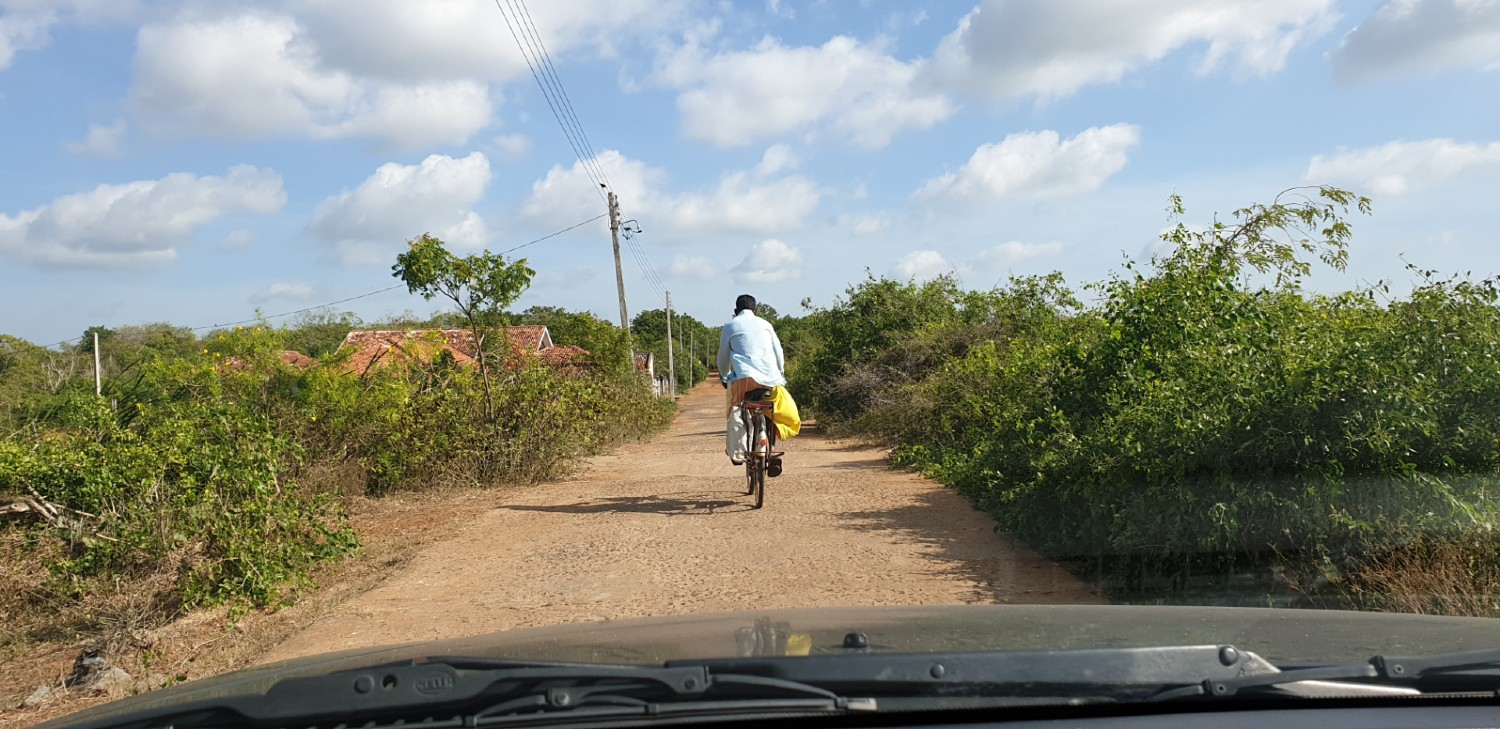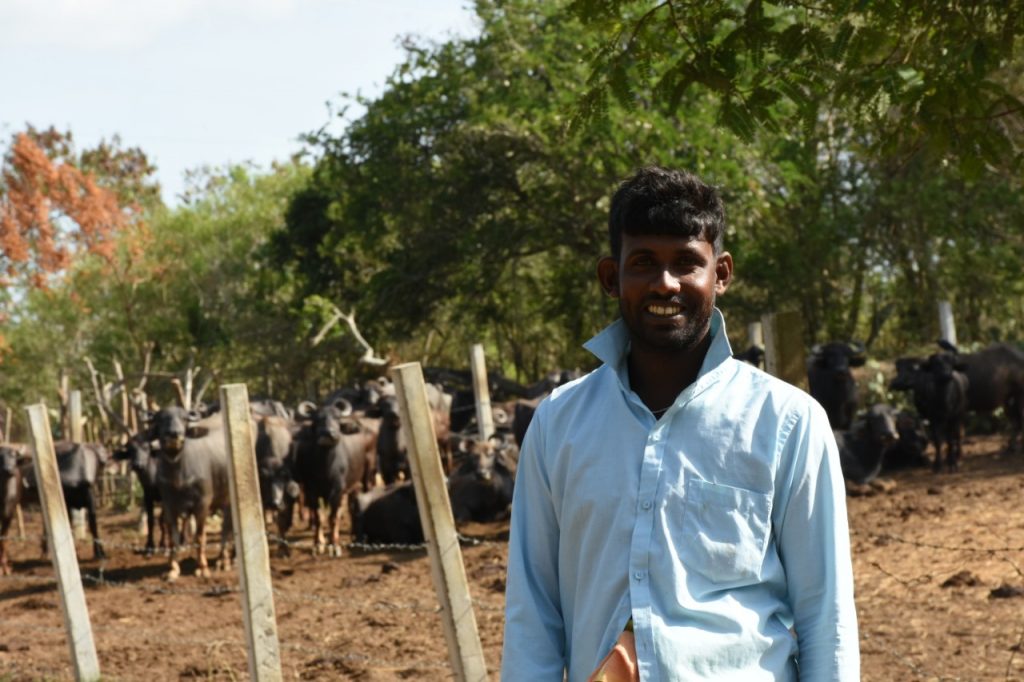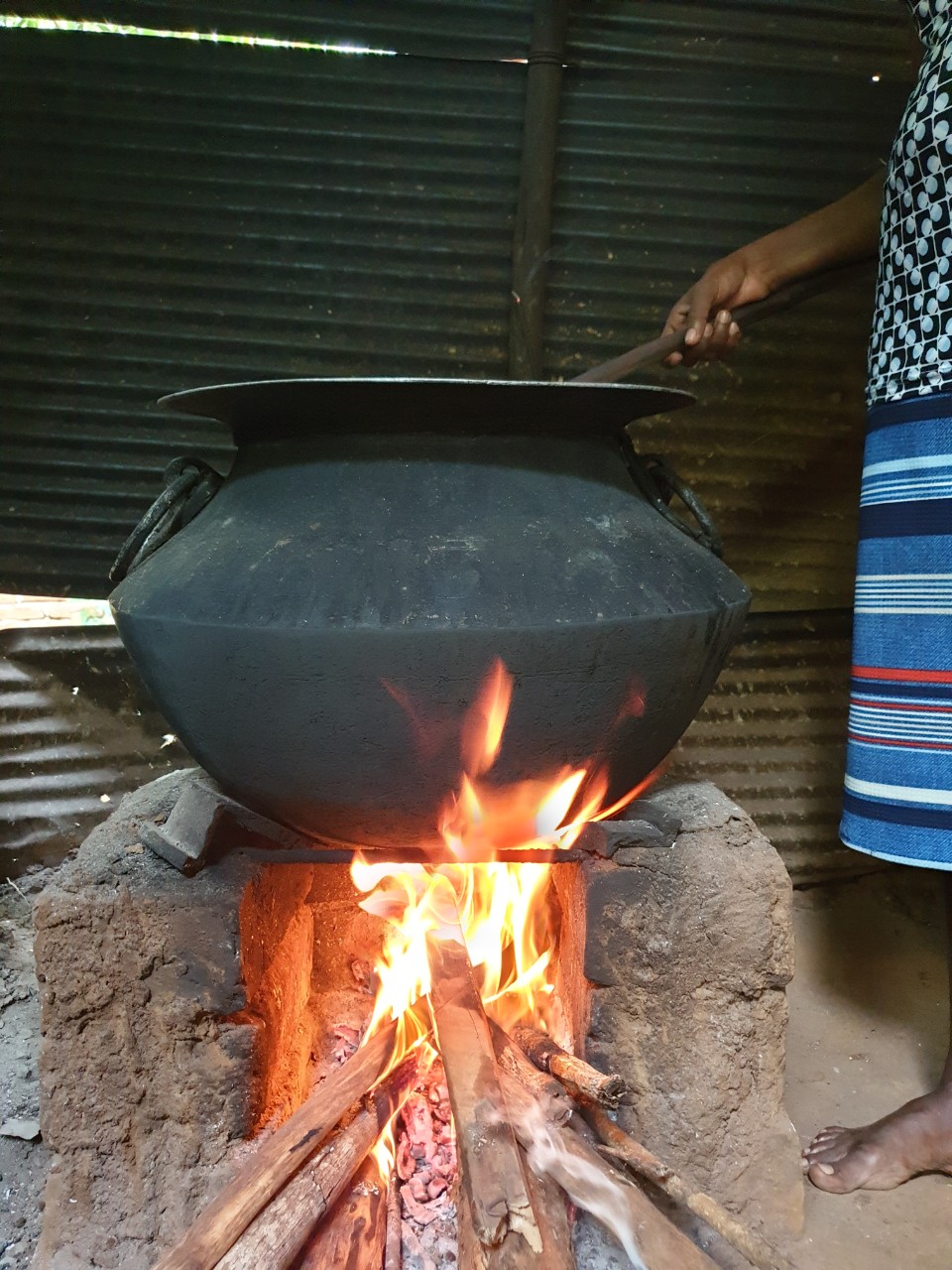
Flash back to December 2018. It’s a hot, dry morning in Tangalle and I’m cruising slowly in a car with a guide, following behind a young Sri Lankan guy on a bicycle, who is cycling carefully with a big green carton of fresh buffalo milk on either side of him. He wobbles his way through an emerald, palm-fringed village and down a dusty dirt track to his house, then hops off his bike with the cartons; I swiftly follow suit.

His name is Gamini. He woke up at 6am that morning to go and milk the buffalo, which belong to him and his uncle. Even though the family struggle to make ends meet, they’ve had to try to install cameras on their plot of land, to prevent theft of their cattle. Each morning, Gamini cycles for 15 minutes to the farm to do the milking – in itself a laborious job, as his left hand has been badly twisted since birth, and hangs limply by his chest. Each batch of curd depends on how much milk Gamani can get; the amount of milk depends on the amount of food the buffalo have, which is dependent on the amount of rainfall. So, during the dry period, they have no milk, which means no curd, which means no money.
Gamani’s family comes out to welcome us: his young wife Kalyani, her mother, her sister and two beaming kids. Kalyani takes the milk through to a wooden shed at the back at the house, by the garden, where a giant cauldron is being warmed above a hearty wood fire. She places a muslin strainer over the cauldron and pours the milk in, removing any buffalo-y traces such as hairs and other residue. This straining process is repeated a few times.

Then it’s time to stir. And not with a namby pamby little spoon or ladle – a hefty wooden staff is used. Despite her slim arms and small stature, Kalyani stirs with strength, seemingly unphased by the roasting hot, smoky conditions in the shed. I offer up my feeble stirring skills a few times, much to the gang’s amusement (and my arm muscles’ outrage). After about 40 minutes of constant heat and constant stirring, the milk eventually begins to bubble and boil – our (welcome) cue to take it off the heat.
Next up, the curd is poured into a mini army of small earthenware pots, which are placed under an exposed light bulb on a table in the front room, shielded with mosquito nets. Kalyani carefully injects each pot with a little bit of curd (culture) from her previous batch, which helps with the fermenting process. Nothing else is added. The curd is left to cool for about six hours. In the evening, Kalyani takes it to her cousin’s stall on the main road, where they sell the day’s curd.

I’m given a bowl of yesterday’s mee-kiri to taste, sweetened with lashings of sticky kithul treacle. I know every step that has gone in to making it, and how small the profit will be, and I’m grateful for every delicious mouthful. Before we leave, we go to see the buffaloes with Gamani. I thank them heartily for their part in the process and they gaze back with bovine disinterest. Herd act to please.